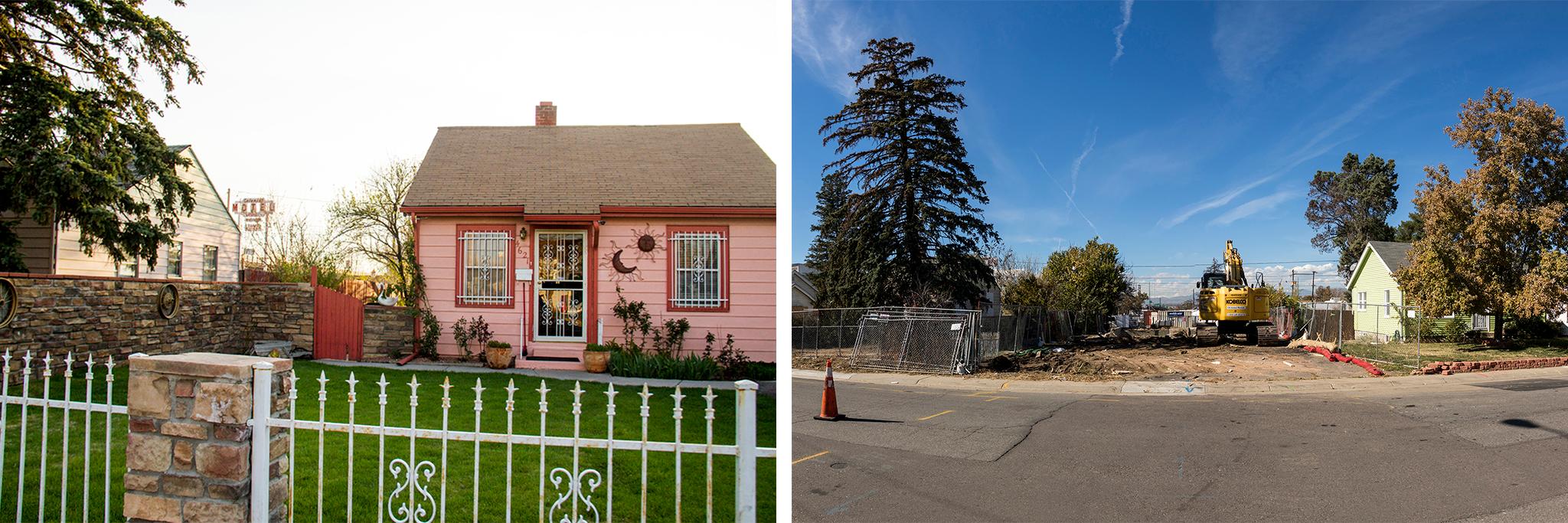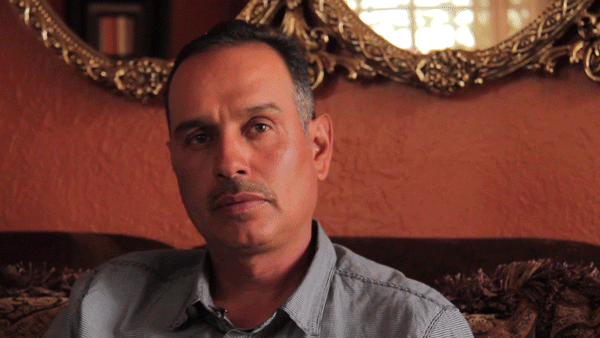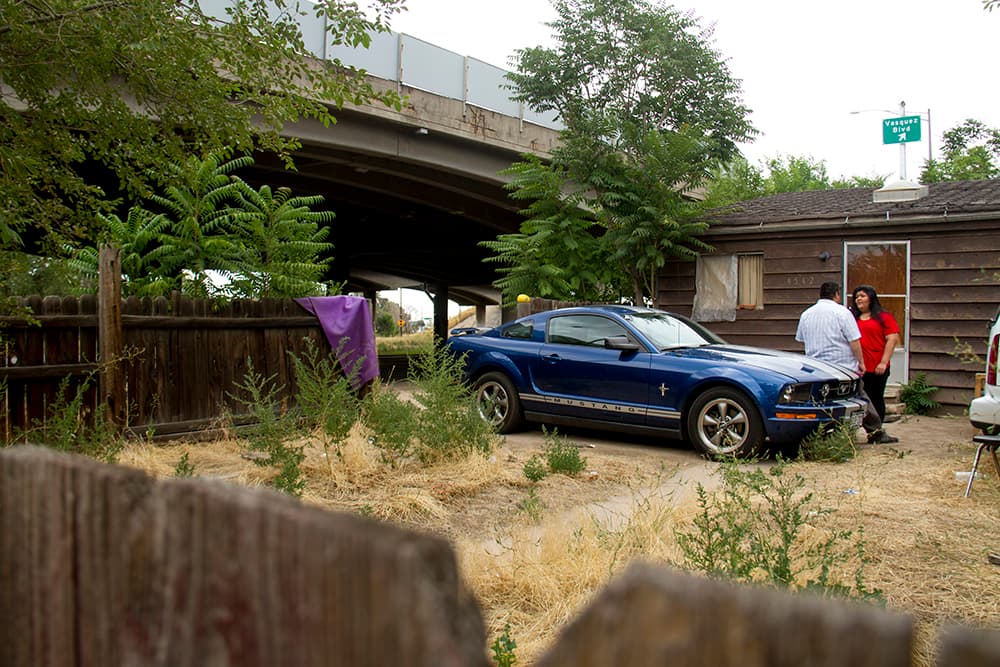In 2016, Oscar Soltero was waiting with anxiety to learn if his family would have to move. They spent 25 years living in a little house in Elyria-Swansea that he and wife, Leonila, had put their lives into making a home. They painted it pink, built an addition and groomed the yard. They raised their two daughters there and became active in the local church.
But the family lived less than block from I-70, and the writing on the walls was becoming clearer by the week. CDOT was probably going to take their home as highway renovations got underway.
Back then, Soltero was nervous about where they might end up. Elyria-Swansea sometimes stank like dog food and the highway was loud, but it was theirs and they were comfortable there.

CDOT ended up acquiring 56 residential properties to make way for their project, 32 of which were single-family homes. Soltero's was one of them, and last weekend it was the first house on its block to vanish. The rest will be scraped in coming weeks, and the viaduct will start to come down in 2020.
Denverite compiled a list of those homes and attempted to contact as many former residents as possible. We wanted to know if people who left were able to stay in Denver and how they felt about their moves now. We managed to reach eight.
Of those eight families, only Soltero's still lives in Denver.
Rebecca White, spokesperson for CDOT, said 12 families in total "chose" to stay in Denver. Most people we reached moved to nearby cities like Thornton and Aurora. One moved to Las Vegas. One person thinks her neighbors moved to El Salvador, though that wasn't confirmed.
While former residents' experiences spanned from very positive to very negative, everyone we spoke to expressed a sense of loss in having to leave the neighborhood.
What happens when you have to leave your home?
Many of the now-empty houses were acquired by CDOT through a process called eminent domain, which is dictated by federal law. This happens when a government agency needs land for a public need, like a highway project. If residents want to fight the process, they can take their case to a jury, which decides if the deal is necessary and what proper compensation should look like. But often, property owners and governments work something out before a jury is necessary, and that was the case for all of the Elyria-Swansea homes.
CDOT paid most property owners between $160,000 and $300,000 for their homes. The agency also compensated residents for the expense of relocating, and helped people find new homes that are appropriately sized based on the number of people living in a household and to make sure that boys and girls could have their own rooms. While families were allowed to choose where they relocated, they still had to qualify for a mortgage if they needed one. CDOT partnered with a nonprofit to offer counseling and loan services for people looking for a loan.
Renters were offered assistance money that would come in three installments over 42 months, unless they wanted to buy a home. In that case, they could get the total sum up front for a down payment. White said 39 residents who were renting became homeowners through the process.

Most people had deep roots in Elyria-Swansea and were sad to see their time there come to an end. But now that everyone is settling into someplace new, their feelings about moving vary.
Soltero purchased a home in Green Valley Ranch. Though he was concerned about where his family would land, things worked out in the end.
"I didn’t know it would turn out to be a better deal," he said. "The house that we’re in right now, it's a lot bigger and it’s a better neighborhood."
Plus, he added, "We don’t have the smell from Purina anymore."

Lavonne Griffie's mother worked three jobs to afford the house at 4615 Fillmore St., and finally purchased it in 1955.
Griffie grew up there. She watched as the highway was constructed over the neighborhood in 1964 and as it later began to deteriorate. Eventually, chunks of concrete began to fall from the viaduct, and it became too much to bear.
"It was very scary," she recalled. "My cousins wouldn’t even come see me because they were afraid the highway would fall down."
When CDOT came around to tell her she'd have to move, Griffie jumped at the chance. She's now living in Las Vegas, where she can be close to her kids. She, at least, was pleased with the process.
"They gave everyone a choice of where they wanted to go," she said, "I’m very grateful to CDOT. I never dreamed this would happen."
She thinks her neighbors should be happy too, although she added, "I would have loved to live in that tiny, drafty house."
Sherry Martinez's grandparents were already living at 4601 Clayton St. when she was born. It eventually became her mom's house, which she rented from her sister who still lives around the block. Her family is big, and they have long been a part of civic life in the neighborhood.
Today, she lives in Firestone and her mom bought a house in Federal Heights. She said the sale was a pretty good deal. They were able to buy the houses without loans.
Martinez said she's still sad to have left Denver. Leaving Elyria-Swansea was about more than a financial transaction, but she still couldn't afford to stay.
"The property value in the city is just really outrageous now," she said. "I am bummed because I feel like we were pushed out. We are Denver natives."

Cassandra Munson lived with her mother at 4625 Fillmore St. since 1982, just blocks away from her grandparents and brother. She and her kids grew up there. The yard was lined by huge lilac bushes planted by her grandmother that Munson tended until she left.
"We did not stay in Denver and we were not satisfied," Munson told Denverite. She said, at first, CDOT told them they'd just need to take their garage, but she later learned that the agency was going to acquire the entire property.
"They told us for two years that our house wouldn’t be taken," she said. "We found out maybe 120 days before they took the house. We had 90 days to move out."
Then, a frantic housing search began. Munson tried to find somewhere in Denver that would allow her mom easy access to medical care and a short commute for her kids to get to school in Park Hill. But she said the cost of living in town proved to be too big a barrier.
"You can't get a house for $215K these days," she said.
So instead, Munson and her mother moved to Thornton, where they each bought homes.
"It was really just short notice. We had no choice," she said. Her mom, she added, doesn't like living there: "She’s pretty upset. She’s disabled. It took a toll on her."
Esmeralda Aguilar's family also found out they would lose the house they rented at 4542 Fillmore outside of a normal process. A neighbor was the first to tell them, and they were the first to inform their landlord.
In a 2016 interview with Denverite, Aguilar said the process had caused a lot of stress in the house, which was packed with extended family who had lived together for years. When they went looking for a new home, they were looking for a place that would accommodate everyone. A few weeks ago, she told Denverite that became a sticking point in their dealings with CDOT.
"They didn’t believe we were all family," she said. "That was probably the most difficult part of it."

But finding a place was difficult, too. Aguilar looked at a lot of places and spoke to a lot of landlords. She found a few places in town that she liked, but every time she approached CDOT about one, the place would be rejected because it was too small for the six residents and their four dogs. In the end, the family bought a house in Commerce City.
"We really did get a good amount of money and we were able to find somewhere good," she said. But she's still upset they had to leave the city. "We know Denver really well, I’ve lived there all my life. That’s just the hardest part for now."













